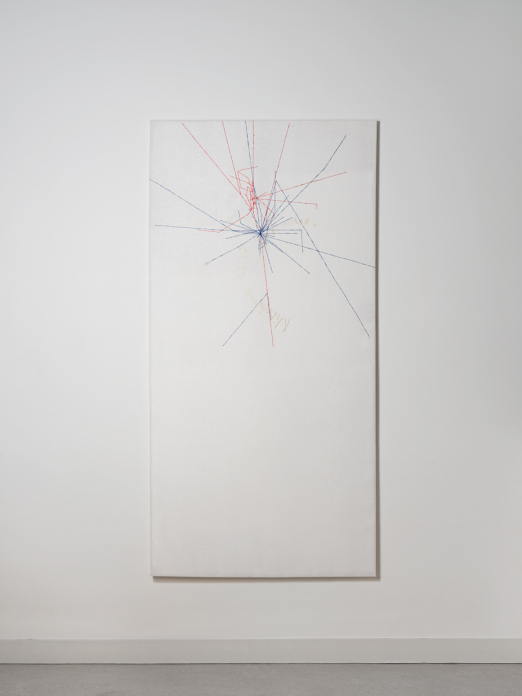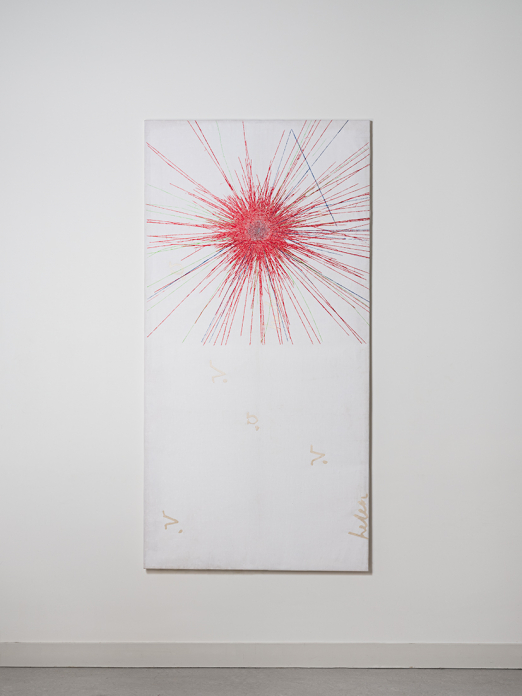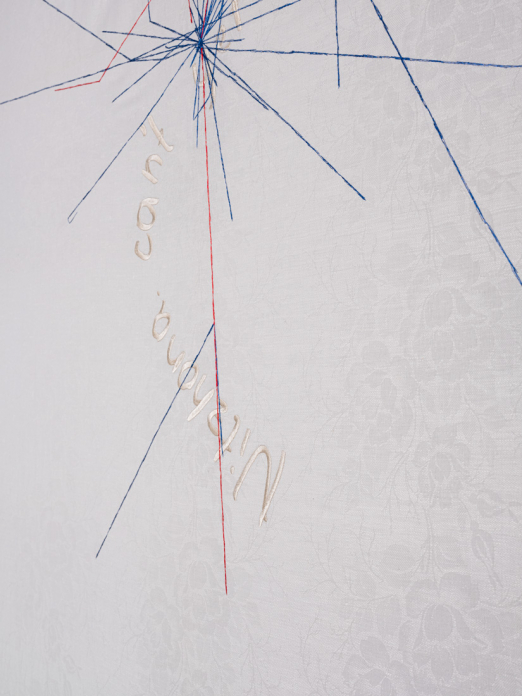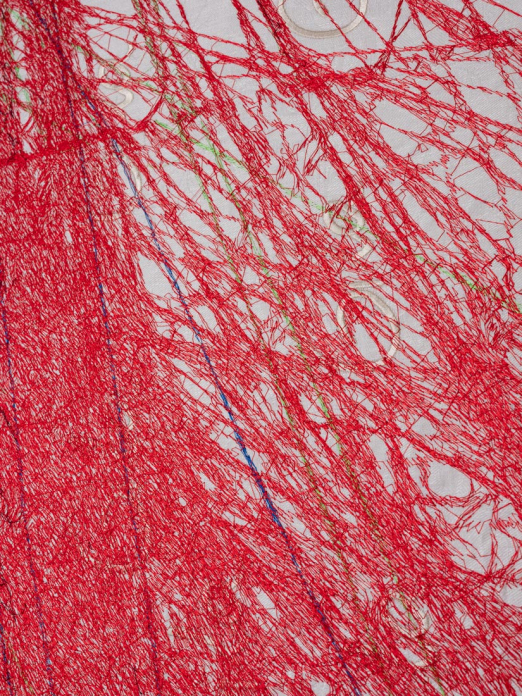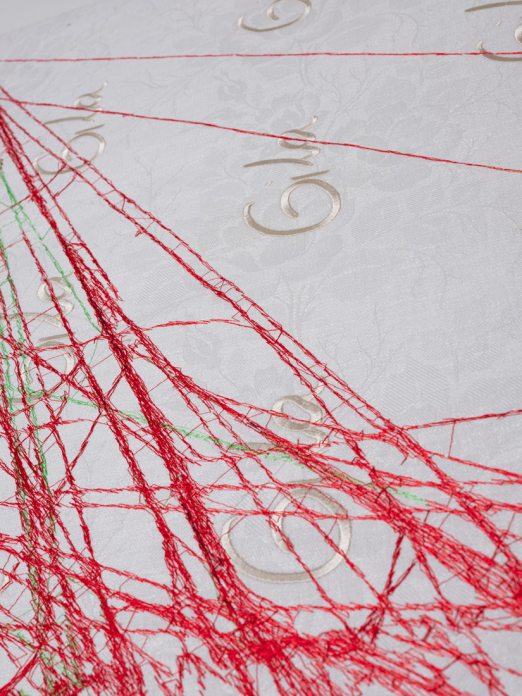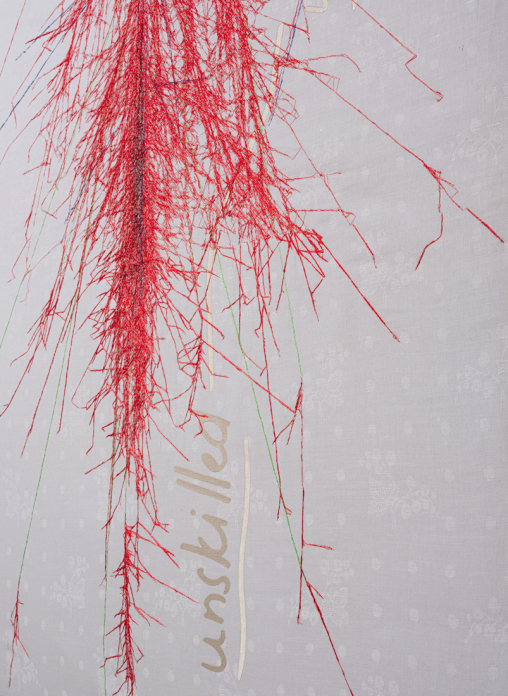Tova , Anna, Helen , Gila , Yaffa ,Anat ,Nitzhona ,Geula ,Hana
220 x 110cm, embroidery on old Soviet table linen
In 1952, this world of invisible influence and interaction was captured by the newest technological invention – the Bubble Chamber.
The Bubble Chamber was a radiation detector that used a superheated liquid as its detective medium. The liquid boiled into tiny bubbles of vapour around the ions produced along the tracks of subatomic particles, which were later captured on photographic film.
After its invention, the Bubble Chamber detector operated for around 30 years and produced thousands, soon tens of thousands, and finally millions of photographs of subatomic particles. Such massive data on new particles required “armies” of technicians and scanners, who were asked to join physicists in sorting through the endless stream of 70 mm negatives.
It was thought that this job should naturally be delegated to women. A new department of “scanner girls” was created. Women became the first to examine and record the nuclear and particle tracks on photographic emulsion frame by frame.
The “scanning girls” viewed their frames on special tables in a darkened room. Operating the apparatus took a certain amount of skill and coordination; moreover, all the coordinates had to be carefully noted.
After such large-scale and fortunate experiments and detections, any of these women were destined to win Nobel Prizes, get their names into the history books, or even, at the very least, be mentioned in the publications.
This project is dedicated to all the invisible particles, as well as all the invisible workers operating in the past, present or future.

